Introduction
Mobile commerce, or m-commerce, has revolutionized how we engage in commercial transactions. Today's consumers use their smartphones and tablets not just for communication, but for a seamless shopping experience that spans both online and physical realms. M-commerce caters to this trend with responsive mobile apps and websites that allow for shopping on-the-go, mobile banking, and seamless payment processes.
The landscape of m-commerce is diverse and dynamic, with industries like fashion and baby boomers adopting mobile shopping. Distributed commerce and simplified checkout processes are key to reclaiming lost sales and boosting conversion rates. Mobile advertising has adapted to the m-commerce boom, catering to different screen sizes and user interactions.
The rise of mobile devices has made immediate communication almost universal. The burgeoning Indian e-commerce market exemplifies m-commerce's potential. In a world where smartphones are ubiquitous, businesses must adapt to the evolving demands of tech-savvy consumers to thrive in the digital marketplace.
What is Mobile Commerce?
Mobile commerce, often shortened to m-commerce, has revolutionized how we engage in commercial transactions. Today's consumers use their smartphones and tablets not just for communication, but for a seamless shopping experience that spans both online and physical realms. M-commerce caters to this trend with responsive mobile apps and websites that allow for shopping on-the-go, mobile banking, and seamless payment processes.
The landscape of m-commerce is diverse and dynamic. Take the fashion industry, for instance, where a study by Outform highlighted that 72% of shoppers blend online and in-store experiences, valuing the tactile sensation of products and using physical stores for inspiration. Meanwhile, baby boomers are increasingly adopting mobile shopping, with a preference for online shopping growing as they seek brand loyalty and convenience.
The rise of distributed commerce is a testament to the evolving nature of m-commerce. According to the Baymard Institute, removing friction from online transactions is key, as 70% of US shoppers have abandoned purchases due to cumbersome checkout processes. Simplifying this could reclaim a staggering $260 billion in lost sales and boost conversion rates by 35%.
Mobile advertising, too, has adapted to the m-commerce boom. Banner ads and interstitials are crafted to fit the unique context of mobile users, catering to different screen sizes and user interactions. This personalized approach to advertising is essential in a market where digital mobile technology has become almost universal. Reflecting on the magnitude of this shift, it's noted that where once only one in 16 people had access to immediate communication by phone, now nearly everyone has a mobile device.
Finally, the burgeoning Indian e-commerce market is a prime example of m-commerce's potential. With increased internet penetration and smartphone adoption, platforms like Flipkart are championing innovation and entrepreneurship, leading to an empowered generation of women entrepreneurs and a surge in economic independence.
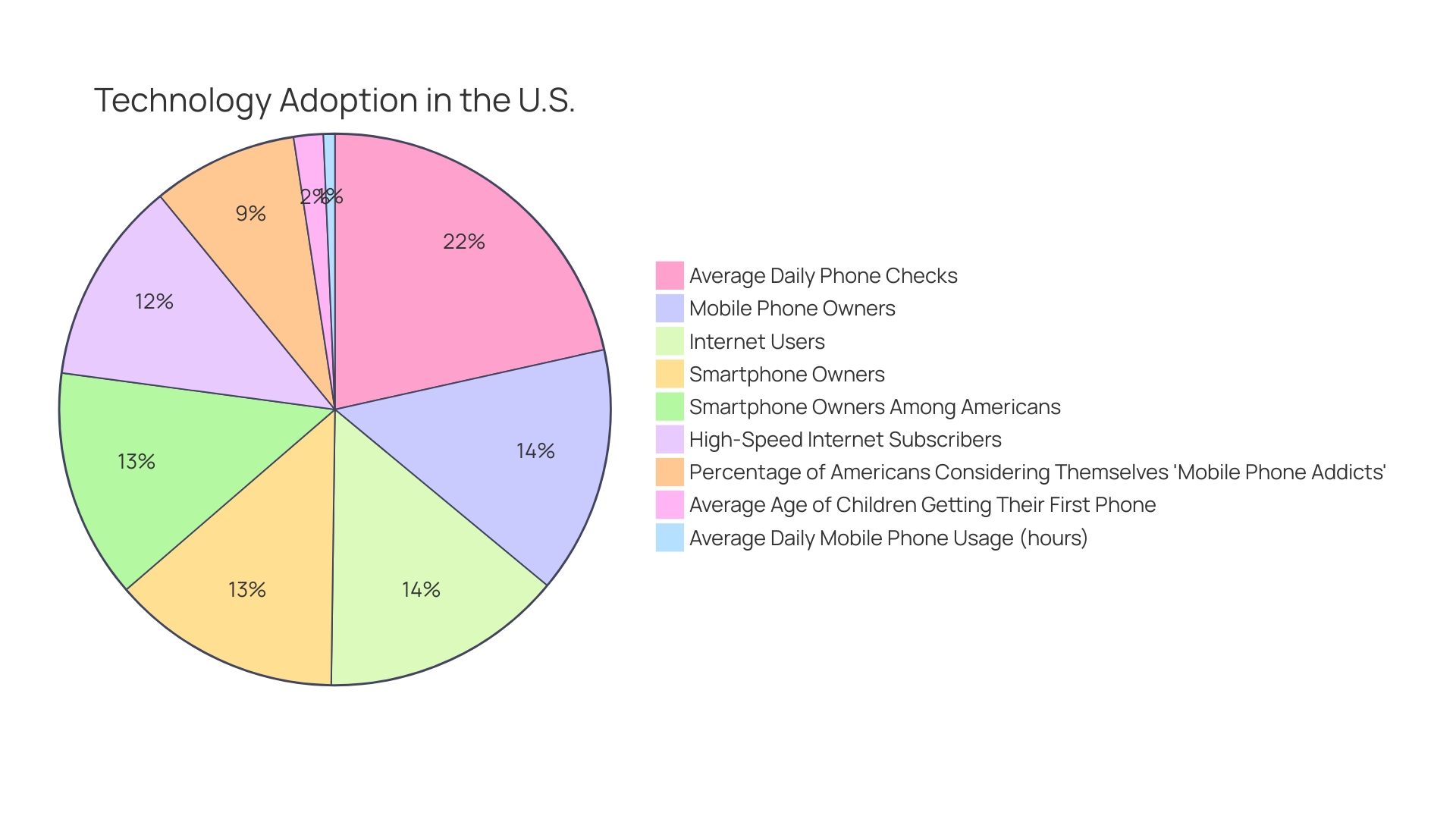
Evolution of Mobile Commerce
The landscape of mobile commerce, or M-Commerce, has undergone a remarkable transformation since its inception. What started as simple mobile websites enabling straightforward browsing and purchasing has evolved into sophisticated platforms driven by mobile applications and enhanced connectivity. The growth trajectory of mobile commerce can be illustrated by the case of Mirakl, which expanded from a foundational business concept in 2012 to a booming enterprise with a projected fivefold increase in revenue over the following five years. Companies like Mirakl have revolutionized the market by providing the necessary technology for established retailers to integrate third-party seller products into their marketplaces, thereby enriching the shopping experience.
The influence of mobile phones extends beyond commerce into societal development, transforming how people worldwide access essential services and information. As highlighted by the Digital Frontiers program, mobiles serve as a critical tool for addressing local challenges and improving lives, particularly in emerging economies. This profound impact is underscored by the evolution from the bulky analog devices of the past to the nearly ubiquitous digital mobiles of today, a change that has democratized access to communication on a global scale.
Moreover, the surge in mobile usage has spurred innovations within the e-commerce sector, with startups and entrepreneurs at the forefront of this revolution. News of Amazon India's Great Indian Festival and Flipkart's support of entrepreneurs exemplifies the ongoing advancements and the enthusiasm for mobile commerce within the marketplace. The integration of mobile devices into daily life is not only a testament to their convenience but also to their role in driving economic growth and productivity.
With mobile commerce now embedded in various industries, from retail to travel, the sector continues to thrive, offering customers worldwide the ability to engage in transactions with ease. The structure of e-commerce, inclusive of 14 different markets like Beverages and Food, reflects the diverse nature of online sales, further emphasizing the role of mobile devices in expanding the reach and capabilities of businesses around the globe.
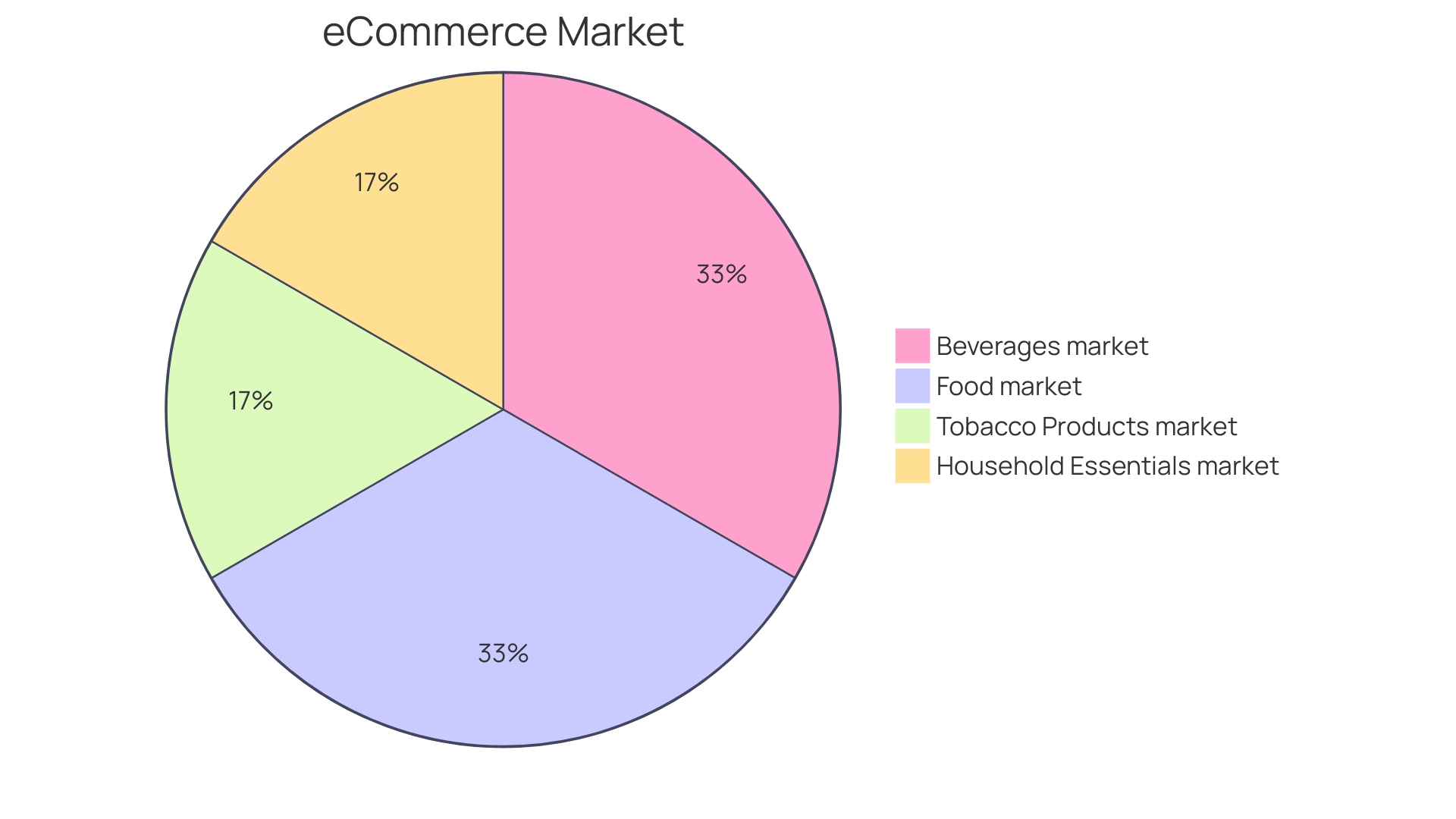
Key Features of Mobile Commerce
Mobile commerce, or M-Commerce, has revolutionized the way we conduct transactions, blurring the lines between the physical and digital worlds. Innovations like mobile wallets and one-click payments are not just add-ons but essential tools for businesses to keep up with consumer demand for speed and convenience. For instance, mobile wallets such as Apple Pay and Google Pay have streamlined payments, offering a secure and hassle-free way to shop. Customers have embraced this technology, with mobile wallet usage expanding across all generations, reflecting its broad appeal. The trend is supported by data indicating that, by 2026, an anticipated 5.2 billion people will be using digital wallets globally.
M-Commerce also leverages location-based services and push notifications to create a more personalized shopping experience. With over 200,000 unique points of interest collected and integrated into customer platforms, businesses can now offer personalized services and products based on the user's location, enhancing customer engagement. This targeted approach is crucial as it enables businesses to connect with their customers in meaningful ways, offering them relevant deals and updates.
Furthermore, the advent of checkout-free stores, such as the one opened in Dublin Airport with Zippin technology, showcases the future of retail. These innovative solutions offer unparalleled convenience by allowing customers to simply grab their items and go, eliminating wait times and enhancing the overall shopping experience.
The significance of these M-Commerce features is underpinned by a growing digital payments market, projected to reach $9.46 trillion in 2023. This growth is driven by the desire for transactions that are not only swift and secure but also cross-border, allowing consumers and businesses to easily engage in international commerce.
In summary, the features of M-Commerce, from mobile wallets to location-based services, are not mere conveniences; they are the response to a digitally-savvy customer base that values efficiency, personalization, and security. As technology continues to evolve, so too will the capabilities and expectations of M-Commerce, shaping the future of how we buy, sell, and interact with the world around us.
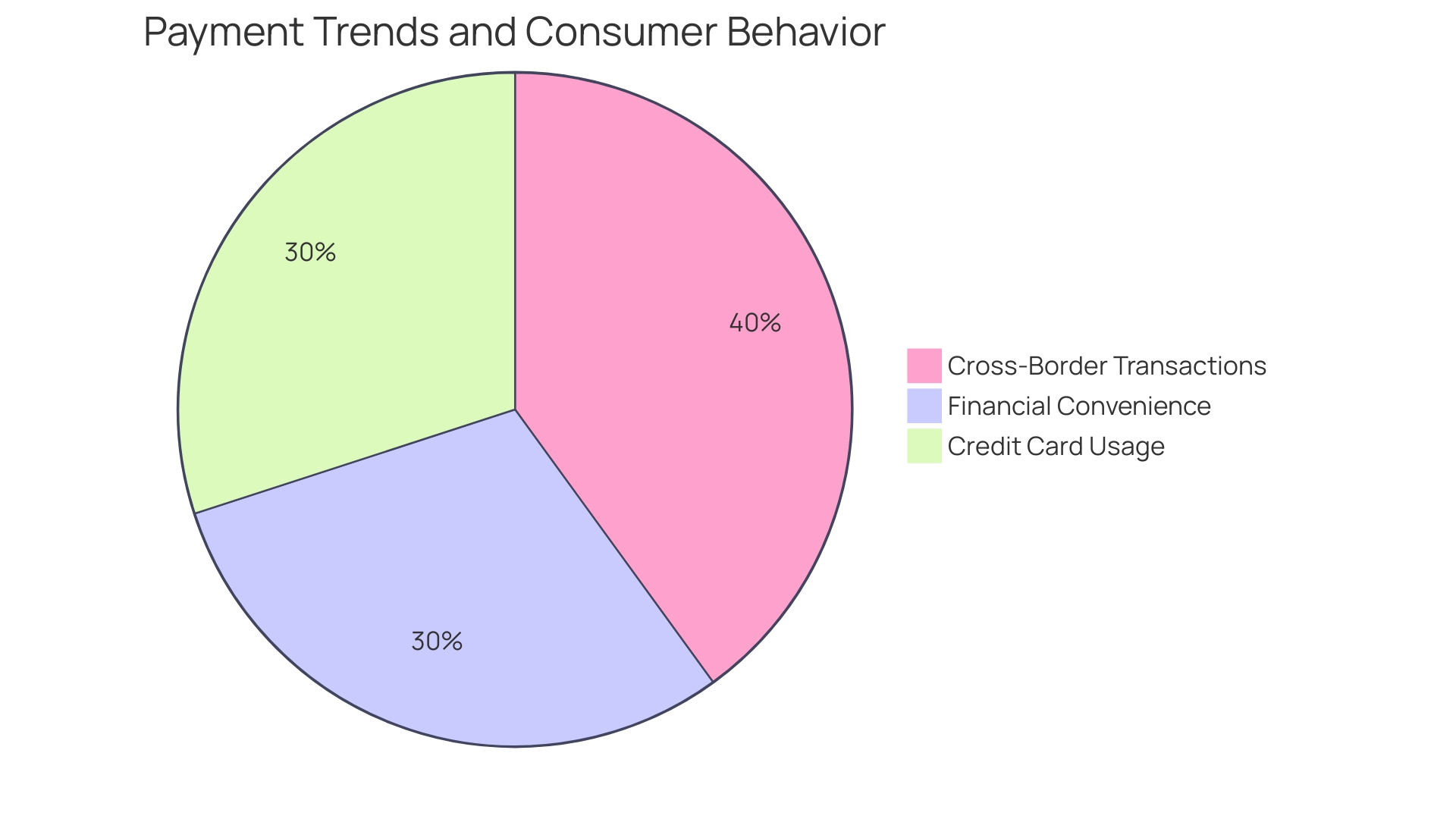
Benefits of Mobile Commerce for Businesses
Mobile commerce, or m-commerce, has transcended beyond a trend to become an essential avenue for businesses to amplify their market reach and customer engagement. With the ubiquity of smartphones in daily life, businesses have the opportunity to connect with more consumers than ever before. By embracing mobile platforms, companies can significantly boost their sales and revenue prospects.
The personalization and convenience offered by m-commerce platforms foster a shopping environment that resonates with the modern consumer's desire for seamless experiences. For instance, beauty industry leader Benefit Cosmetics revolutionized its appointment scheduling by integrating WhatsApp, enabling customers to effortlessly manage their bookings. This shift not only elevated customer satisfaction but also streamlined operations, underscoring the potential of m-commerce to enhance service delivery.
Moreover, the analytical capabilities of m-commerce systems offer a treasure trove of customer insights. These data points are invaluable in refining marketing strategies and tailoring business decisions to consumer preferences, ultimately driving loyalty and repeat business. This strategic advantage is reflected in the initiative taken by Currys to overhaul its marketing setup, resulting in a significant reduction of manual processes and operational inefficiencies.
As e-commerce continues to grow, with industries ranging from food and beverages to travel and hospitality all participating in the digital marketplace, it is evident that m-commerce will remain at the forefront of this expansion. In fact, statistics from eMarketer indicate that the number of smartphone users is projected to reach 6.9 billion by 2024, highlighting the vast potential for businesses to tap into the mobile market.
The success stories from leading e-commerce events like Amazon's Great Indian Festival and Flipkart's support for entrepreneurs demonstrate the dynamic nature of the online market. These platforms not only offer great deals but also empower businesses and consumers alike, showcasing the transformative power of m-commerce in today's economy.
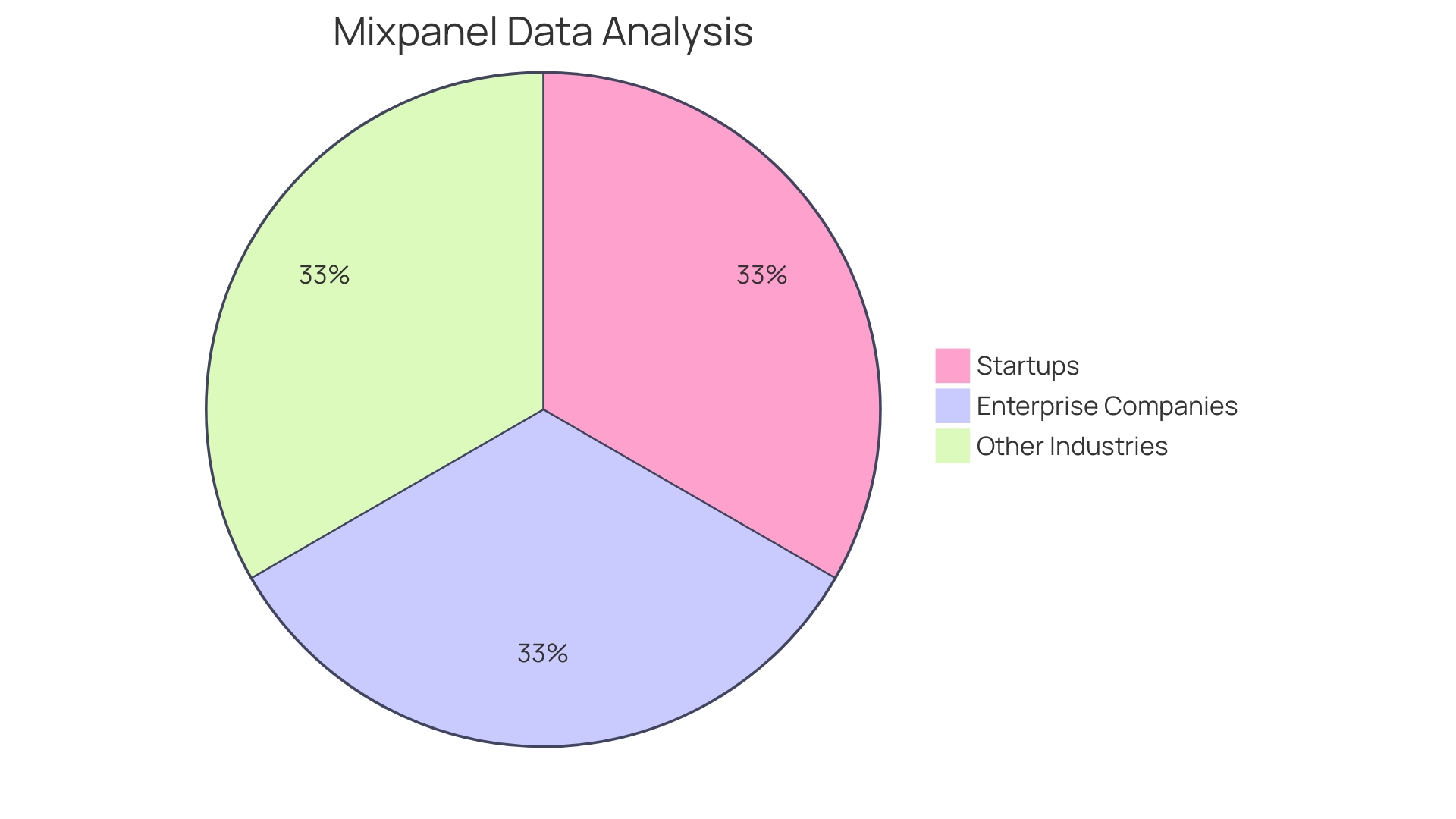
Types of Mobile Commerce Transactions
M-commerce, or mobile commerce, offers a variety of transactional modalities that cater to the convenience of the modern consumer. With the ubiquity of smartphones—projected to reach a staggering 6.9 billion users by 2024—businesses are tapping into the trend where consumers increasingly rely on their mobile devices for shopping needs.
Mobile shopping emerges as the digital storefront, allowing customers to browse and secure purchases through responsive mobile websites or dedicated apps, ensuring an engaging shopping experience regardless of location. Reflecting this trend, brands are focusing on ultra-responsive design, recognizing that a seamless mobile shopping journey is key to retaining the digitally-savvy customer.
The realm of mobile banking equips users with the power to manage finances on-the-go. It simplifies tasks such as monitoring account balances, fund transfers, and bill payments into a few taps on a smartphone app, emphasizing ease and security.
Meanwhile, mobile payments are revolutionizing how consumers transact, with digital wallets and mobile payment platforms offering a secure, cashless, and contactless method to pay for goods or services. The COVID-19 pandemic accelerated this shift, with a notable surge in mobile payment adoption due to health concerns associated with handling cash.
Mobile ticketing also streamlines the acquisition and storage of tickets for various services like events, movies, or transportation, adding to the convenience for users who increasingly prefer digital solutions over traditional physical tickets.
These m-commerce avenues are not only about convenience but also about enhancing the customer journey and providing personalized shopping experiences. As digital commerce evolves, it becomes clear that it is not a single transaction but a complete, end-to-end process that begins well before and continues long after the initial purchase, as emphasized by experts in the field.
The integration of m-commerce into social platforms is another transformative trend. With nearly 10% of social media users logging in to shop weekly, social commerce is becoming a pivotal aspect of the digital shopping experience, merging social interaction with retail opportunity.
Additionally, international retail events, such as the anticipated AliExpress 11.11 sale, underscore the importance of m-commerce, promising faster delivery times and creating interactive shopping experiences through influencer collaborations and livestream events.
As digital commerce continues to interlace with consumers' daily lives, businesses are encouraged to adapt to these evolving trends. Those who ignore the shift towards a comprehensive digital commerce strategy may find themselves lagging in an increasingly competitive online marketplace.
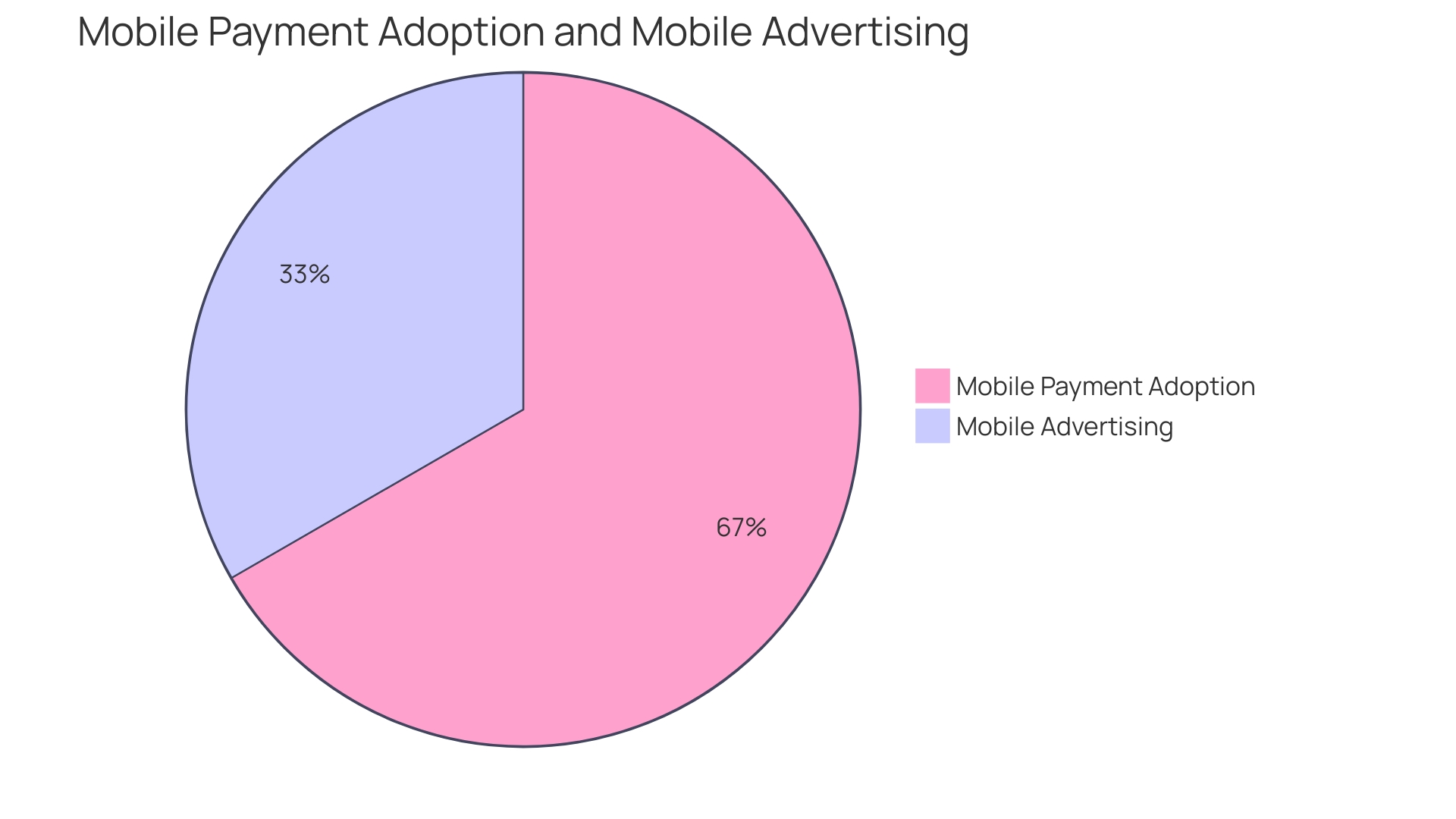
Enhancing User Experience in Mobile Commerce
Elevating the mobile commerce experience is crucial for businesses aiming to thrive in the digital marketplace. A prime focus should be on crafting mobile apps and websites that are not only user-friendly but also tailored for optimal performance on mobile devices. This encompasses a responsive design that adjusts seamlessly to different screen sizes, swift loading times to minimize customer wait times, and streamlined navigation to facilitate effortless browsing.
Personalization is another pillar of a superior mobile shopping experience. By harnessing the power of data analytics and advanced machine learning algorithms, businesses can offer customized recommendations and deals that resonate with individual user preferences and prior shopping behavior.
Moreover, the significance of mobile security cannot be overstated. To safeguard user data and financial transactions, implementing stringent authentication protocols and robust encryption is imperative. This not only protects consumers but also reinforces their trust in the brand, an essential component of customer loyalty.
Case studies illustrate the effectiveness of these strategies. For instance, by setting clear performance goals and rigorously pursuing them, one tech company significantly enhanced their app's speed, a move that was well-received by users and served as an inspiration for others in the industry. Furthermore, visionary concepts like designing an app to explore any place or time on Earth demonstrate the innovative potential in mobile app development, even if such ideas remain hypothetical.
Recent news highlights the trend towards integrating technology and experiential retail, as seen in MediaMarkt's 'Lighthouse' stores, which blend physical and digital shopping environments to create an unmatched consumer experience. The anticipated growth of such flagship stores underscores the rising importance of a dynamic and interactive retail landscape.
Statistics reinforce these insights, showing that with an estimated 6.9 billion smartphone users by 2024, having a mobile commerce strategy is not optional but a necessity. Trends suggest that ultra-responsive design and social commerce integration will become even more prevalent, considering that nearly one in ten social media users now shop on these platforms weekly.
In conclusion, businesses that prioritize a robust, secure, and personalized mobile commerce experience are well-positioned to meet the evolving demands of today's tech-savvy consumers.
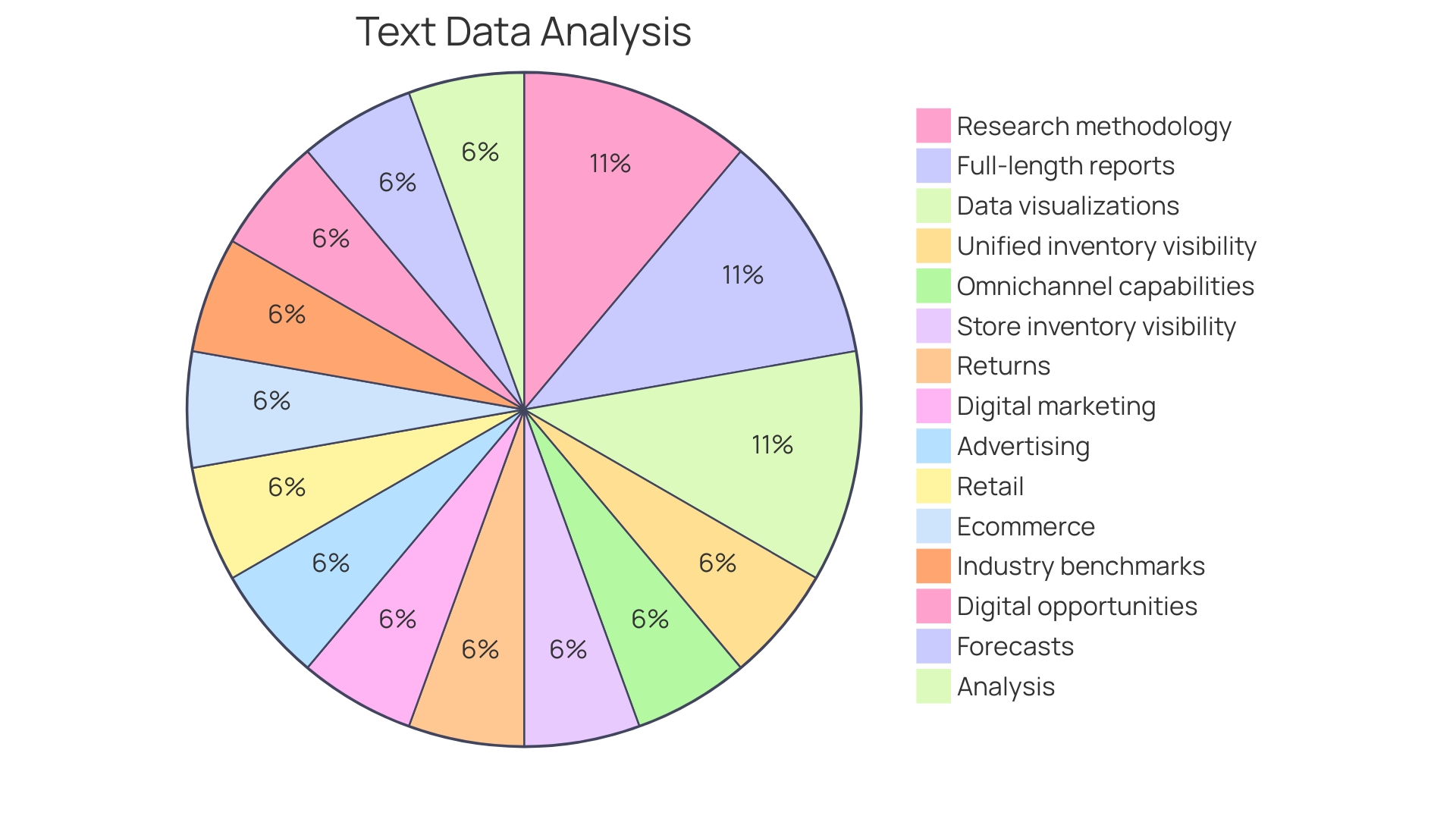
Security Measures in Mobile Commerce
As the world becomes increasingly mobile-centric, with an anticipated 6.9 billion smartphone users by 2024, ensuring the security of m-commerce transactions is paramount. Protecting customer data is not only a competitive advantage but a necessity, with 79% of mobile customers citing data privacy as their top concern when shopping online. To address these concerns, businesses must adopt robust security measures.
Among the most effective protections is the implementation of Secure Socket Layer (SSL) encryption, which safeguards data transmitted between mobile devices and servers, making it indecipherable to potential interceptors. Furthermore, two-factor authentication (2FA) provides an additional security layer, requiring users to verify their identity with a combination of credentials, such as a password and a one-time verification code.
Biometric authentication technologies, such as fingerprint and facial recognition, are becoming mainstream, offering a user-friendly and secure authentication option. Another innovative method is tokenization, which replaces sensitive data like credit card numbers with unique identifiers, thereby reducing the risk of data breaches.
Adherence to data privacy guidelines is also critical. Regulations like the General Data Protection Regulation (GDPR) in Europe, and its counterparts in the UK and US, dictate transparent data processing and minimal data collection based on user consent, ensuring consumer trust.
Cybersecurity experts emphasize that beyond digital measures, physical security is equally important. A strong password or PIN, along with biometric checks, can prevent unauthorized access in case of physical device theft or loss. Additionally, users need to be vigilant against sophisticated cyber threats like phishing, smishing, and vishing, which exploit social engineering to deceive individuals into compromising their own security.
In this evolving digital landscape, retailers must prioritize cyber safety and view it as a fundamental component of their business strategy. With eCommerce websites incorporating open-source code—97% of which contain vulnerabilities—it's essential to stay vigilant and employ comprehensive security practices to mitigate risks. As industry leaders in mobile security reveal, the threat extends beyond individual apps to include potential supply chain attacks, highlighting the importance of secure app development and regular security audits.
Ultimately, the goal is to create a secure m-commerce environment that not only meets current safety standards but also anticipates future challenges, making cybersecurity an indispensable element of retail success in the digital age.
Case Studies: Successful Mobile Commerce Implementations
Ripley's foray into mobile commerce serves as a compelling case study for other retail giants looking to enhance their business through digital transformation. As one of the principal retailers in Chile and Peru, Ripley sought to leverage its strong presence in the apparel, technology, and home product segments by translating its in-store experience into a mobile application. Their mission to enrich customers' lives through products and services required a seamless, user-centric mobile platform that offered the convenience and accessibility their customers craved.
The creation of their mobile app began with a week-long Lean Inception workshop, bringing together the teams from Ripley and Thoughtworks to define objectives and key results (OKRs) for the minimum viable product (MVP) of the app. The focus was to cater to the substantial number of customers visiting from mobile devices, aiming to optimize their shopping experience and align it with Ripley's vision of connected user experiences. This approach was not without its challenges, as initial data revealed mobile conversion rates were disappointingly low, indicating the existing website failed to deliver the desired mobile user experience.
In response, Ripley embarked on a comprehensive overhaul of their mobile approach, grounded in user-centered design and extensive customer behavior research. The technical side saw the adoption of modern best practices and tools to maintain an updated tech stack, which was disseminated throughout the development team, enhancing the overall quality and sustainability of their systems.
The launch of the app aimed to present customers in Chile and Peru with a quick, easy, and reliable shopping channel. This advance was not merely about creating an additional sales avenue but about embracing omnichannel retailing, a strategy where online and offline experiences are seamlessly integrated. As experts note, unified commerce is now essential, providing real-time inventory visibility across all nodes, enabling features like BOPIS (Buy Online, Pick-Up In Store), and ensuring that returns are as convenient as they are in-store, regardless of where the purchase was made.
In the wider retail landscape, innovations like checkout-free stores, exemplified by the new Dublin Town To Go store at Dublin Airport, powered by Zippin technology, are setting a precedent for what's possible in retail efficiency and customer convenience. As retailers look forward to events like Black Friday and Cyber Monday, and accolades such as the 2023 RTIH Innovation Awards, the emphasis on omnichannel capabilities and customer-centric technology becomes increasingly evident.
Benefit Cosmetics' approach to customer engagement, offering convenient service channels for appointment scheduling via WhatsApp, reflects the industry's shift towards personalized, accessible services that honor the customer's time and preferences. These examples underscore the importance of adapting to the digitally savvy consumer, ensuring that every interaction with the brand is as delightful and efficient as possible.
Best Practices for Implementing Mobile Commerce
To thrive in the ever-evolving landscape of mobile commerce, it's essential to harness best practices that are in tune with current trends and customer expectations. Understanding your audience is paramount; market research can reveal valuable insights into customer preferences, ensuring your strategy resonates with their needs. A mobile-optimized platform is no longer a luxury but a necessity. With responsiveness and swift load times, your mobile app and website must cater seamlessly to a variety of devices and operating systems.
In 2023, the rise of generative AI and personalized experiences has set a new benchmark for customer engagement. The success of Benefit Cosmetics in transforming their appointment scheduling via WhatsApp exemplifies the potential of personalized and convenient service delivery. Similarly, ensuring a smooth and secure user journey, from browsing to payment, can significantly enhance customer loyalty.
Security measures are crucial in safeguarding user data, with SSL encryption and two-factor authentication becoming industry standards. As the digital landscape continues to evolve, with increasing emphasis on data privacy and regulatory compliance, investing in robust security is not just best practice but a vital component of mobile commerce.
Continuous improvement is the linchpin of success. By leveraging unified inventory systems, retailers have developed an omnichannel approach that meets consumers' expectations for flexibility and transparency. Regular analysis of user data and feedback, as highlighted by industry leaders through Insider Intelligence's comprehensive research, allows for ongoing optimization of your mobile commerce strategy.
In conclusion, by integrating these best practices, businesses can navigate the challenges of mobile commerce and capitalize on its myriad opportunities, setting the stage for growth and innovation in an increasingly mobile-centric market.
Future Trends in Mobile Commerce
The landscape of mobile commerce (M-commerce) is rapidly advancing, with emerging trends that are reshaping the way consumers engage with brands and make purchases. Voice-activated shopping, powered by virtual assistants like Siri and Alexa, is on the cusp of transforming the retail experience. This voice commerce allows consumers to shop and conduct transactions with simple spoken commands, blending convenience with technological sophistication.
Augmented reality (AR) and virtual reality (VR) are also at the forefront of this evolution. These immersive technologies are not just gaming novelties but pivotal tools in the M-commerce domain. They enable shoppers to virtually try on clothing, preview furniture in their homes, and engage with products in a hyper-realistic manner, thereby bridging the gap between digital convenience and in-store tangibility.
Furthermore, the rise of mobile wallets and digital currencies is streamlining the payment process. Enhanced security and the ease of tap-and-go transactions are appealing to the modern consumer, who values both security and convenience. Cryptocurrencies, in particular, are becoming a more commonplace option for mobile transactions, as they cater to a growing demographic seeking alternative payment methods.
Artificial intelligence (AI) and machine learning are the silent engines powering the personalized shopping journey. With their help, M-commerce platforms can analyze consumer behavior, predict shopping patterns, and curate product recommendations with unprecedented accuracy. This level of personalization is not just a trend but a new standard in customer engagement, setting the stage for more intuitive and satisfying shopping experiences.
Embracing these innovations is key for businesses aiming to excel in the competitive M-commerce arena. As consumer expectations evolve, staying attuned to these trends is essential for providing cutting-edge mobile commerce experiences that captivate and retain customers.
Conclusion
In conclusion, m-commerce has revolutionized commercial transactions, offering a seamless shopping experience across online and physical realms. With responsive mobile apps and websites, businesses cater to the growing trend of on-the-go shopping, mobile banking, and seamless payment processes. Industries like fashion and baby boomers have embraced mobile shopping, while distributed commerce and simplified checkout processes are essential for boosting conversion rates.
Mobile advertising has adapted to different screen sizes and user interactions, and the rise of mobile devices has made immediate communication almost universal.
The burgeoning Indian e-commerce market exemplifies the potential of m-commerce, highlighting the need for businesses to adapt to the demands of tech-savvy consumers in the digital marketplace. To enhance the mobile commerce experience, businesses should prioritize user-friendly mobile apps and websites, utilizing personalization through data analytics and machine learning algorithms. Implementing security measures like SSL encryption and two-factor authentication is crucial for protecting user data and maintaining consumer trust.
Successful implementations of mobile commerce, such as Ripley's mobile app and Benefit Cosmetics' integration of WhatsApp for appointment scheduling, showcase the power of personalized service and omnichannel retailing. Best practices for implementing mobile commerce include understanding the audience, optimizing platforms for responsiveness, prioritizing security, and continuously improving through data analysis and feedback.
Looking ahead, emerging trends in mobile commerce, such as voice-activated shopping, augmented reality, virtual reality, mobile wallets, digital currencies, artificial intelligence, and machine learning, will shape the industry. Businesses that embrace these innovations can provide cutting-edge experiences that captivate and retain customers.
In summary, by prioritizing a seamless, personalized, and secure mobile commerce experience, businesses can thrive in the competitive digital marketplace. Adapting to industry trends and implementing best practices will ensure success in meeting the evolving demands of tech-savvy consumers. M-commerce continues to revolutionize commercial transactions, offering endless possibilities for businesses to engage with customers and drive growth in the mobile-centric world.





